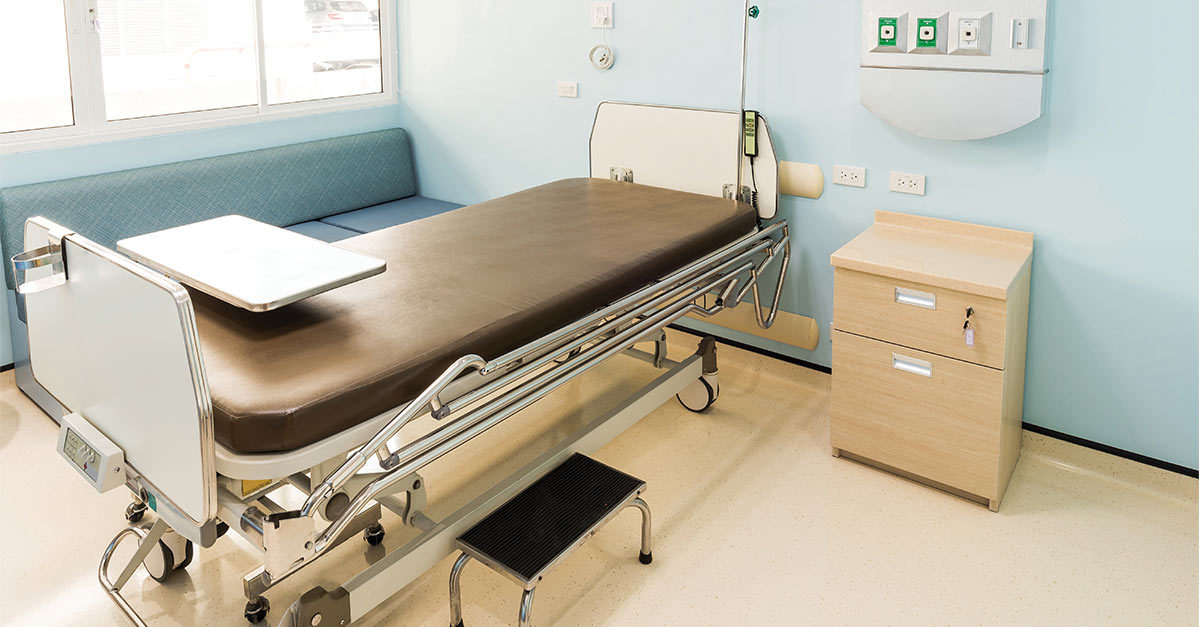When you think of workers responsible for preserving the health of patients in hospitals, outpatient care centers, and other health care facilities, physicians and nurses may first come to mind. However, environmental services (EVS) workers can provide the best defense in protecting patients from a wide range of health care-acquired infections (HAIs).
“Infection control affects each and every one of us every single day. Every person has a part to play in preventing infections, especially environmental services workers, who play a major role,” said Katie Pisciotta, an epidemiologist at George Washington University in Washington, D.C., during an educational session at the ISSA Show North America 2018 in Dallas, TX.
Approximately 1.7 million Americans contract an HAI each year, and almost 99,000 die from the infection, according to the latest statistics from the U.S. Centers for Disease Control and Prevention. Survivors face long recovery times, with the average hospital stay increasing by 17.6 days for patients with HAIs.
With so much at stake, EVS staff are challenged to assist facility leaders in reducing the number of infections and improving patient outcomes. Pisciotta said most failures to prevent HAIs come from a communication breakdown, rather than a lack of knowledge. To keep infection control procedures running smoothly, EVS leaders need to develop a standardized program for all staff to follow.
Set Up Your Standards
Terminal cleaning procedures vary depending on the type of infection and patient isolation level, but basic standards apply in all situations. Start by donning the correct personal protective equipment (PPE), which should be listed on a chart posted outside the room. Pisciotta offered an example of protocols for entering a room housing a patient with Clostridium difficile (C. diff). All staff, including EVS staff, must first wash their hands thoroughly with soap and water. “Alcohol-based cleaning is ineffective against C. diff,” Pisciotta explained. Then they must put on gloves and gowns.
Using an effective spore-killing and antimicrobial cleaning solution, such as one containing bleach, clean the most frequently touched areas of the room, such as door knobs, the bedside commode, the bed rails, the bathroom sink and toilet, and the bedside tray. “You have to think about the things people touch every day, so don’t forget the television remote,” Pisciotta said.
Clean Thoroughly Between Patients
Cleaning ramps up another notch when preparing a room for a new patient. EVS specialists with IEHA, a division of ISSA, demonstrated a hospital room turnover cleaning on the ISSA Show floor. Charline Gooley, Environmental Services Director at the University of Illinois at Chicago, narrated as Magelyn Rigivs, a housekeeping specialist at Kona Community Hospital in Kealakekua, HI, demonstrated the proper techniques.
- First, put on disposable gloves. Also don a gown and air mask if you’re turning over an isolation room. Gooley recommends a N95 mask which is available in several sizes to fit the wearer’s face.
- Remove all the bedding.
- Wipe down surfaces using a germicide disinfectant and a cloth. Fold the cloth four times to make eight cleaning sides. Every time you switch surfaces, fold the cloth to a new cleaning side; switch to a fresh cloth after you use all eight sides. “When you wipe, move your hand in an s-shape ergonomic pattern,” Gooley instructed.
- Make sure to wipe down the entire bedside table, including the top, underside, back, sides, and legs.
- Using a fresh cloth, wipe down the bed pillow, then the top and bottom of the mattress.
- Lift the mattress, then clean the top and bottom of the bed base.
- Wipe down the entire bed, including the headboard, footboard, sides, bedrails, legs, and wheels. Remember to get all sides and refold the cloth with each new surface.
- Dust mop the floor starting in a corner away from the door and making your way through the door. Then wet mop the floor, following the same pattern. “Mop the bathroom first, then the rest of the patient room, moving clockwise or counterclockwise; it doesn’t matter as long as you’re consistent,” Gooley said.
- The last step is to remove your gloves without contaminating your hands. (See sidebar)
Keep It Practical
Once you have your standards in place, set up comprehensive training sessions to instruct your EVS staff in the procedures and schedule regular refresher courses, Pisciotta said. Consider offering incentives to keep staff motivated in learning and reviewing the standards. Set up a method to increase compliance, such as a simple checklist staff can fill out after they’ve completed each task or completed each room.
You’ll also need to get buy-in, not only from your EVS staff but from other departments, such as the finance department, which approves the purchase of any equipment and supplies.
The best way to secure buy-in is to make it simple for people to comply with the standards, said Roy Boukidjian, system director of infection prevention at Dignity Health in San Francisco, CA, during another educational session at the ISSA Show 2018 North America.
“The World Health Organization’s definition of infection control is a scientific approach and practical solution designed to prevent harm caused by infections,” Boukidjian said. “If an infection control solution requires an ultraviolet light cleaning system to be set up for 25 minutes in a room, three times a day, that’s not very practical.”
Boukidjian cautioned against making major changes to current procedures if they can be effective standards with a few tweaks. “If your new standard calls for cleaning patient rooms by three zones—the bedroom, sitting area, and patient area—and the EVS staff has historically cleaned patient rooms clockwise or counterclockwise, not by zones, there is going to resistance because you’re going against how they have been cleaning.”




